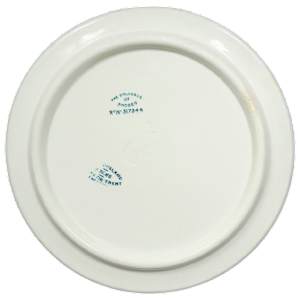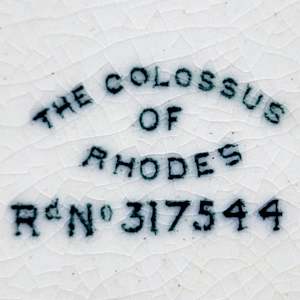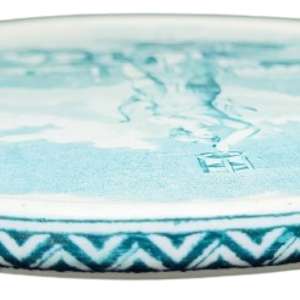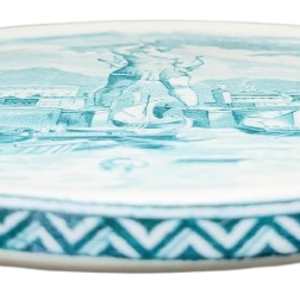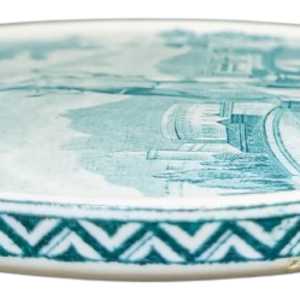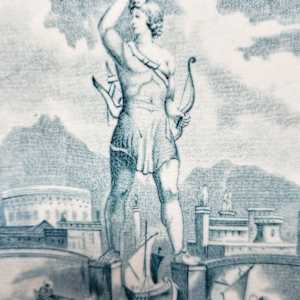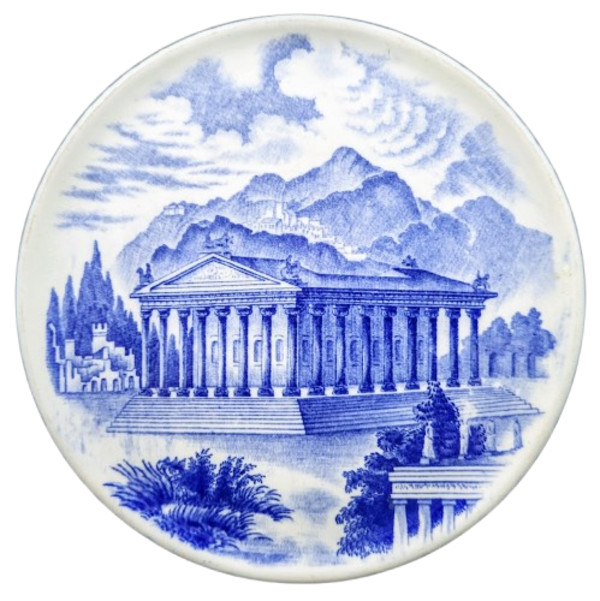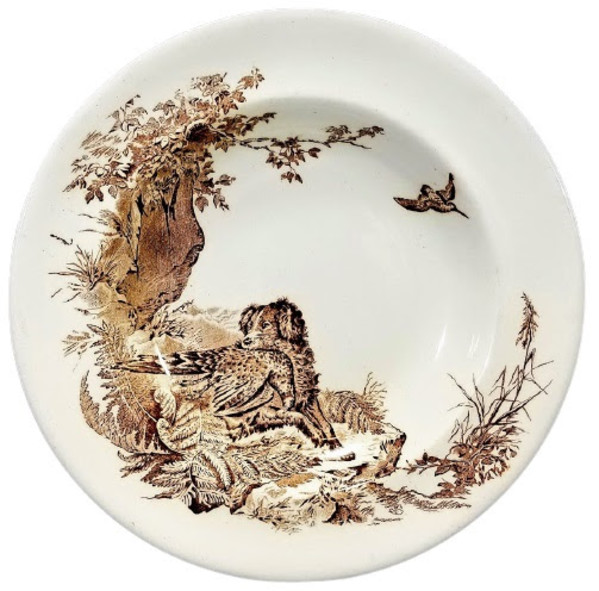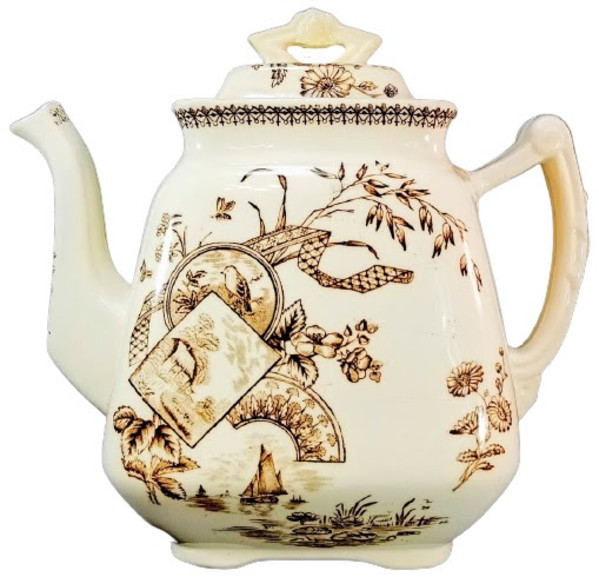- W. T. Copeland & Sons
- The Colossus of Rhodes, Rd. 1898
- Earthenware
- 6.25 x 6.25 in (15.88 x 15.88 cm)
-
Not For Sale
Tile, 6.25 inches diameter. Teal transfer. Impressed maker's mark for W. T. Copeland & Sons. This is part of a series depicting the Seven Wonders of the Ancient World, registered 20 April 1898. The traditional list of the Seven Wonders was originally compiled by Philo of Byzantium in 225 BCE, as a selection of man-made sights for Greek travelers or tourists to see around the Mediterranean rim. The Colossus of Rhodes was a statue of the Greek sun god Helios, erected in the city of Rhodes, on the Greek island by the same name, by Chares of Lindos in 280 BCE. It was constructed to celebrate the successful defense of Rhodes against an attack by Demetrius I of Macedon, who had besieged it for a year with a large army and navy. It collapsed during the earthquake of 226 BCE, although parts of it were preserved. In accordance with the Oracle of Delphi, the Rhodians did not rebuild it. In 653 CE, an Arab force under Muslim general Mu'awiya I conquered Rhodes, and according to the Chronicle of Theophanes the Confessor, the statue was completely destroyed and the remains sold.
W. T. Copeland was the only son of William Copeland, partner of Josiah Spode in the Stoke Potteries, of Staffordshire and of Portugal Street, London. He succeeded his father as head of the porcelain firm in Portugal Street, London and eventually bought out the interests of the Spode family in the business in the Potteries and London. He ran the business in partnership with Thomas Garrett between 1833 and 1847. After the dissolution of the Copeland and Garrett partnership, it traded as W.T. Copeland and Sons. (1847-1976). In 1866 Copeland was appointed china and glass manufacturer to the Prince of Wales.
- Subject Matter: Classical Inspired
- Collections: British Tiles, British Transferware (1800-1930), W. T. Copeland & Sons

